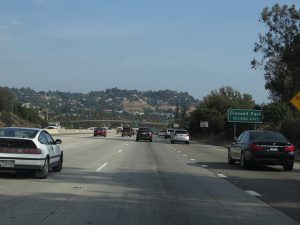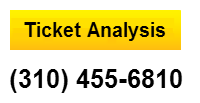 California’s highways operate under a ‘Basic Speed Law.’ The law decrees that one shall never drive faster than is safe for the current conditions. Thus, driving at 40 mph on a 55 mph zone highway may as easily put you on the wrong side of the law for over-speeding on a foggy day as driving 70 mph on a 65 mph freeway for delaying a traffic that is moving at 80 mph.
California’s highways operate under a ‘Basic Speed Law.’ The law decrees that one shall never drive faster than is safe for the current conditions. Thus, driving at 40 mph on a 55 mph zone highway may as easily put you on the wrong side of the law for over-speeding on a foggy day as driving 70 mph on a 65 mph freeway for delaying a traffic that is moving at 80 mph.
However, this is not the only California traffic rule that gets most out of state drivers in trouble.
Defining Section 22348(c) of the California Vehicle Code
Section 22348(c) of the California Vehicle Code defines the fast lane as the innermost lane on a divided four-lane freeway or the one immediately to the right of a carpool lane.
- Vehicles in this lane are expected to move at the highest speed at any time of the day.
- The outermost lane adjacent to the curb is usually the slowest to allow for vehicles to slow down while preparing an exit from the freeway or to enable drivers to pick up speed while just joining the highway.
- For this reason, the lane is typically reserved for heavy commercial vehicles that are limited to a maximum speed of 55 mph regardless of how faster the traffic could be flowing.
Therefore, towing vehicles, three-axle or more trucks, buses, and all other vehicles subject to Section 22406 must be driven in the designated right-hand lane, or next one—especially while overtaking, or on unmarked four-lane highway—under Section 21655.
What Does Section 22348 (c) of California Vehicle Code Imply
Driving in the 3rd lane, or the one immediately to the right of the fast lane is an infraction under Section 22348 (c) of California Vehicle Code for this category of vehicles unless a vehicle is one mile far from making a left turn, or when overtaking. The rule does not, however, apply to most of other States in America, and comes as a shocker to most out-of-state offenders.
- Even more painful is the fact that it can accrue up to more than 1.5 points on the offender’s records, and worse still if he/she holds a non-California driving license.
- As such, simply paying up the ticket fee—hefty as it can sometimes be—is never the best of all viable options. Any chance of striking out such a record from one’s history should be every career driver’s goal.
What Are Your Options To Fight These Tickets
The good news is that there are several legal loopholes to this law that can allow a driver to file a successful defense.
- The most glaring flaw comes from not specifying how soon the vehicle should return to its original lane after overtaking from the 3rd lane.
- It is also worth noting that the intervening patrol officer will not always buy into such excuses and will cite the offender anyway.
- So, what else? Well, one can draft a Trial by Written Declaration that also exempts him/her from attending court proceedings, or independently attend a court trial, all subject to Section 40902 of the Vehicle Code.
- Either way, understanding the law and knowing how to use it to help your case is very crucial.
Attending court trials in person, especially with all the facts and laws right, can be very cost effective when the offender resides close to the traffic court but is less convenient when one is from out of state.
Mailing a Trial by Written Declaration and having an attorney argue out the case on their behalf can save them time, money, and the costs of a bad record. The law firms are also in most cases equipped with numerous defense options that can give the defenders case better chances. Ultimately, traffic offense trials are always subject to how the court reacts to them and, therefore, demands excellent presentation.
[Image: https://www.flickr.com/photos/kenlund/14331254458/]
Scott Desind
Latest posts by Scott Desind (see all)
- How to Request the County Seat and Fight Your California Traffic Ticket - May 21, 2023
- Don’t Even Touch That Cell Phone - July 13, 2022
- Innocent Until Proven Guilty - March 2, 2020

